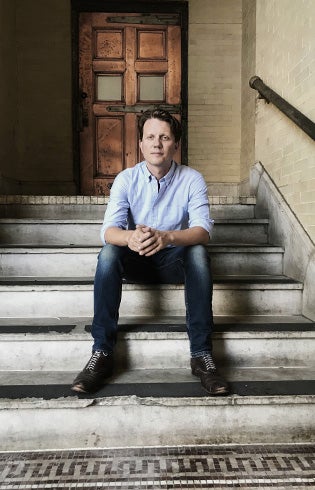
Course teaches students that discussing ideas is better than arguing over them
One person may go for a walk in the forest and see “a bunch of trees.” But a botanist taking that same stroll would likely see a host of beech trees, along with some dogwoods, black walnuts and white pines. The person that sees only a mass of trees may not care if one or several are cut down, but the botanist would have a more nuanced view of the situation, understanding the differences between the species and the consequences of each one’s removal.
“Making decisions based on simplistic categories does harm,” says Jim Clements, associate professor (teaching) of writing at the USC Dornsife College of Letters, Arts and Sciences, during his Writing 150 course “Writing Across the Aisle.”
The class went on to discuss philosophers Simone Weil and Emmanuel Levinas and the concepts of “same” and “other” before turning to how these ideas are enmeshed in the framing of debate. The use of such terms as “attack,” “defending your point,” “counter-attacks” and “strategy” are evidence that the goal of many debates is not to connect or grow or learn, but to win against an “opponent.” Clements suggests, instead, using the metaphor of dance: Two people are engaged in a delicate push and pull, not to beat each other, but to create something beautiful together.
The class finished with Clements pairing students up in teams for an assignment in which they address a topic but “do more than agree or disagree” on it. For example, the first writer could write about how more funding for public broadcasting is needed in order to boost minority voices. The second writer selects a facet of that essay on which to build — perhaps by pointing out the success of films like “Black Panther” and suggesting that minority voices aren’t any less profitable.
“Your goal is not to tell the other person something you already know; it’s to use the back-and-forth as a site of learning,” Clements concludes, just before the students go to their breakout rooms for the rest of the session.
Listening, not telling

Clements says he first was inspired to create the course about seven years ago, after observing that his students often say that they feel that nobody listens to each other and that repercussions for “saying the wrong thing” are dire. Thus, they often prefer to say nothing at all.
“I think there’s certainly a feeling among students — and I’ll be honest, particularly among my sort of right-leaning students — that if they share their political beliefs, it could lead to terrible consequences,” Clements explains.
Romano Orlando, a senior majoring in Italian and neuroscience at USC Dornsife and pursuing a concurrent master’s degree in translational biotechnology at Keck School of Medicine of USC, says that as a more conservative student, he found the class to be a refreshingly judgment-free zone.
“I never felt singled out, or that I would get a worse grade for leaning more conservative. It was about the content of your writing, not the leaning of your writing,” he says. “The students really modeled after Jim Clements when he would not degrade someone for having a viewpoint. It created, from the top down, a safe space to really talk about things.”
Clements notes that his class is not an “anti-cancel culture class,” either. Instead, it aims to discover what belief systems are at the foundation of the positions that people hold, and how we can listen to each other to understand those systems better, before making our moral choices. Rather than viewing “the other side” as a bunch of trees, he hopes to show that each person has thought processes that make their viewpoints, if not unique, then certainly highly individualized. Discussing those underlying beliefs is where dialogue takes place, he says.
Orlando adds that for two people holding different views on an issue like abortion, it’s more effective for each person to self-examine why they hold the positions they do, and why others hold theirs, rather than for each to present a list of arguments aimed at getting the other person to fully agree to the arguer’s own values. In addition to encouraging self-reflection, this practice helps students understand that they don’t have to adhere to a package of beliefs simply because their “side” does.
“It added some nuance and helped me to … instead of just drinking whatever Kool-Aid or package I choose to drink, dig deep into my own thoughts and become more of an individual rather than just another political consumer of, ‘I agree with this. I agree with that,’” Orlando says. “That really was very, very freeing, to not be just another one of the packaged consumers, but to be deep in understanding and knowing in my heart of hearts why I believe something.”
Clements adds that he plans to continue offering the class. The lacerations in our society remain deep, he says, and we need to understand why they exist before we can start to heal them.